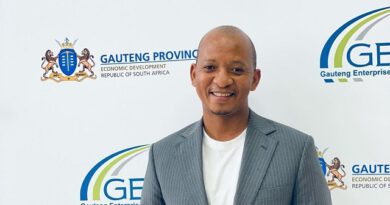B4SA identifies initiatives that could grow GDP by R1trn
Business for South Africa (B4SA) has identified 12 key initiatives that will accelerate the country’s economic recovery and could grow its gross domestic product by R1 trillion, generate 1.5 million jobs and increase tax revenues by R100 billion per year.
The group which was established to coordinate business’s response to the Covid-19 pandemic, released its economic recovery strategy plan dubbed ‘A New Inclusive Economic Future for South Africa‘ on Friday morning.
B4SA, which expects the economy to decline by between 8% and 10% this year, forecasts the budget deficit to increase to 13% of GDP and, without structural reform, sees the budget deficit remaining above 13% while debt is expected to exceed 100% of GDP by 2023.
A fork in the road
“The nation has arrived at a fork in the road,” B4SA believes.
“Protecting the status quo with only marginal change locks in an accelerated downward trend, while a committed leadership willing to make difficult, though sometimes unpalatable choices focussed on appropriate policies, which enable investment and thus inclusive growth, can decisively improve the economic and social trajectory of the country,” it said.
B4SA outlined paths that the country could take, namely the ‘low road’ and ‘high road’.
In the low road, the country would reverse the gains made since the dawn of democracy 26 years ago, where “absent decisive leadership and action” will result in a trap of flat or negative growth, escalating government indebtedness and unemployment.
“Government’s ability to fund the deficit will be further curtailed and the attendant consequences of increasing poverty, rising crime rates, and declining health and education levels could lead to widespread societal instability,” it said.
“On the other side of the coin should the country choose the route of the high road through a combination of decisive leadership and bold action” underpinned by an evidence-based and rational approach, the economy would grow by 5% per annum.
The country’s GDP would double over the next ten years and “materially reducing unemployment, inequality and poverty in the process.
High road
The document comes as a result of two months of work between business and government and various sectors and community groups.
The 12 key initiatives, some of which can be launched immediately, include secure and affordable electricity supply, fast-tracking green economy, implementing Transnet’s road to rail strategy, ports expansion, road infrastructure, the utilisation of full-spectrum, e-learning & digital health platforms, e-commerce acceleration, water infrastructure, maximise commercial agricultural output, import replacement focus, increased financial inclusion and lower cost of capital.
B4SA estimates that the plan will cost R3.4 trillion over the next three years, outlined as a budget deficit and state-owned entity shortfall of R2.4 trillion and private sector funding requirement of around R1 trillion.
“This estimate does not account for potential rescue funds for large corporates or an unforeseen worsening financial situation at SOEs.”
In light of this, public debt will increase from R4 trillion to more than R6.4 trillion over the next three years, said B4SA.
“This funding cannot be met by domestic sources nor is it possible for the South African Reserve Bank (Sarb) to address the shortfall in a responsible and sustainable manner through monetary manners.”
Government is not expected to shoulder this burden alone.
B4SA said the private sector could fund the development of infrastructure in an enabling environment, resulting in the public sector commitment reducing to R1.9 trillion over three years. In so doing the budget deficit will normalise to 3.5% by 2025.
At the same time, the country would need to mobilise international funding, with B4SA saying more than $10 trillion is available from sovereign wealth funds, development finance institutions and alternative asset managers, outside traditional global emerging market debt and equity investors.
“However, most of these alternative sources of foreign capital are not focused on emerging markets and will only consider South Africa if we provide a more compelling investment case,” said B4SA.
An equal number of policy enablers will be required to action the plan successfully. These include tackling crime and corruption, improving ease of doing business, mobilising large scale infrastructure project, SOE reform, getting clarity on land reform, education and skills development, reviewing trade policies, labour law reform, simplifying mining investment regulation, aligning national energy strategy across all key plans, maximising telecoms connectivity, financial inclusion and fiscal support.
Source: moneyweb.co.za


